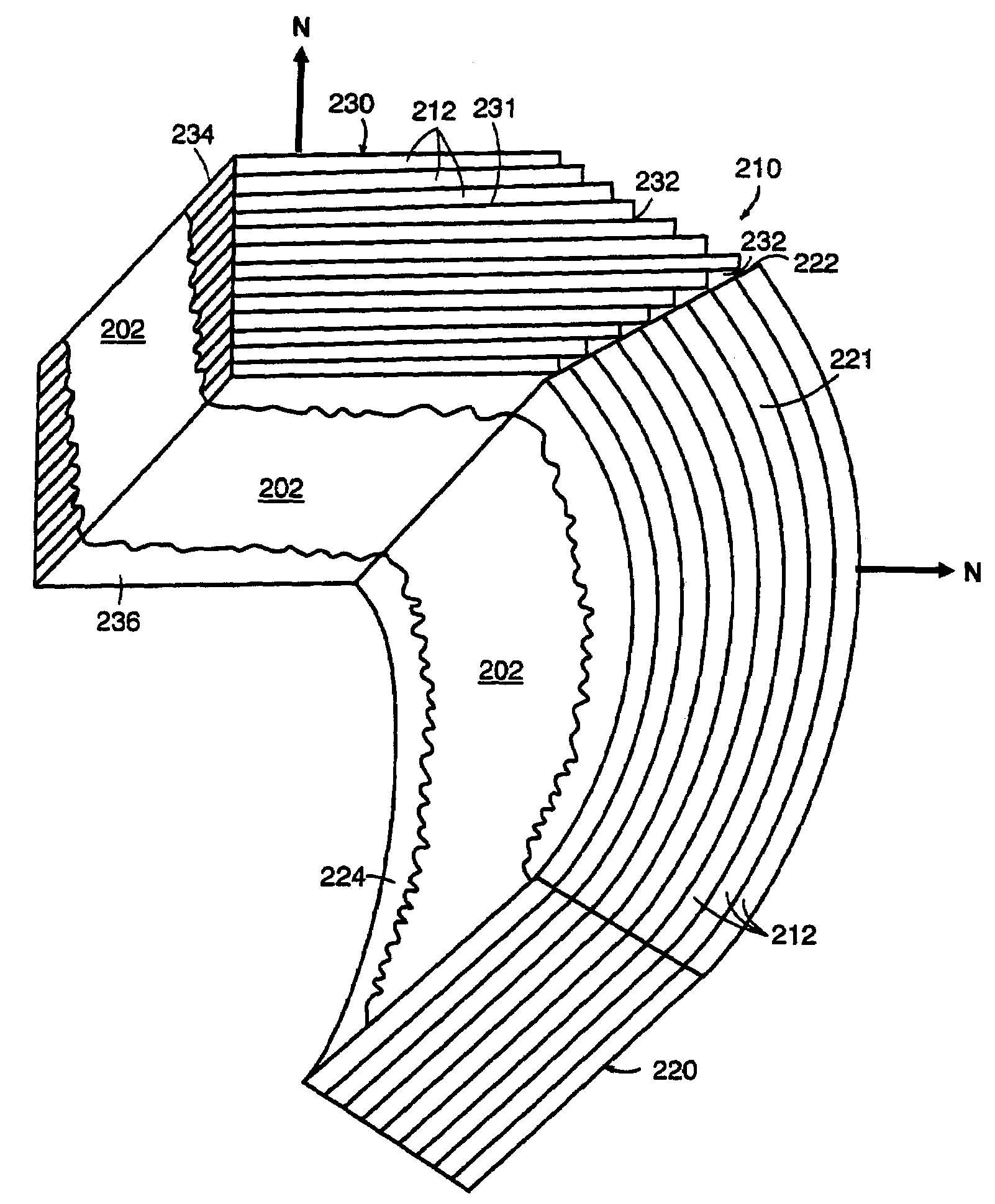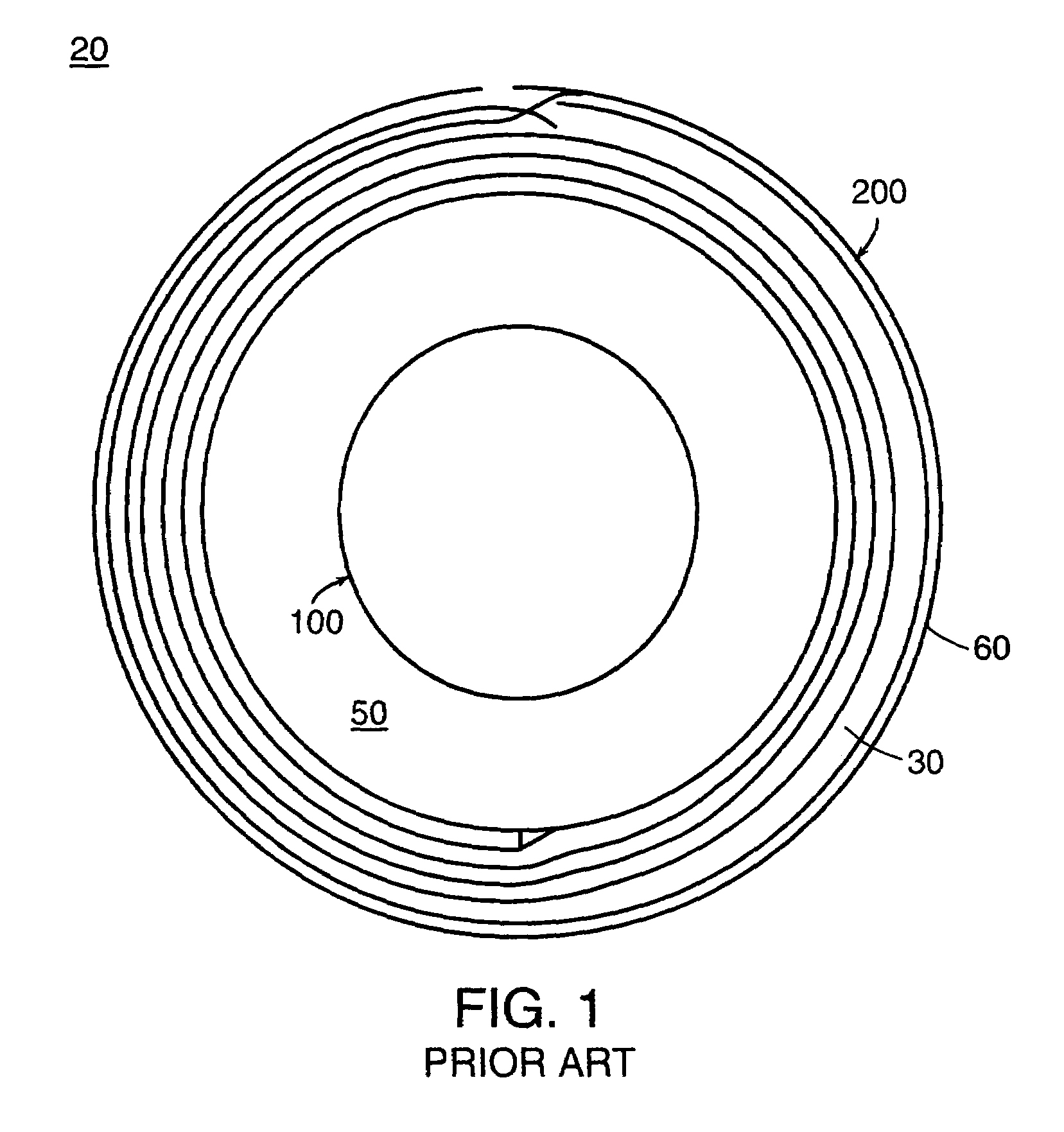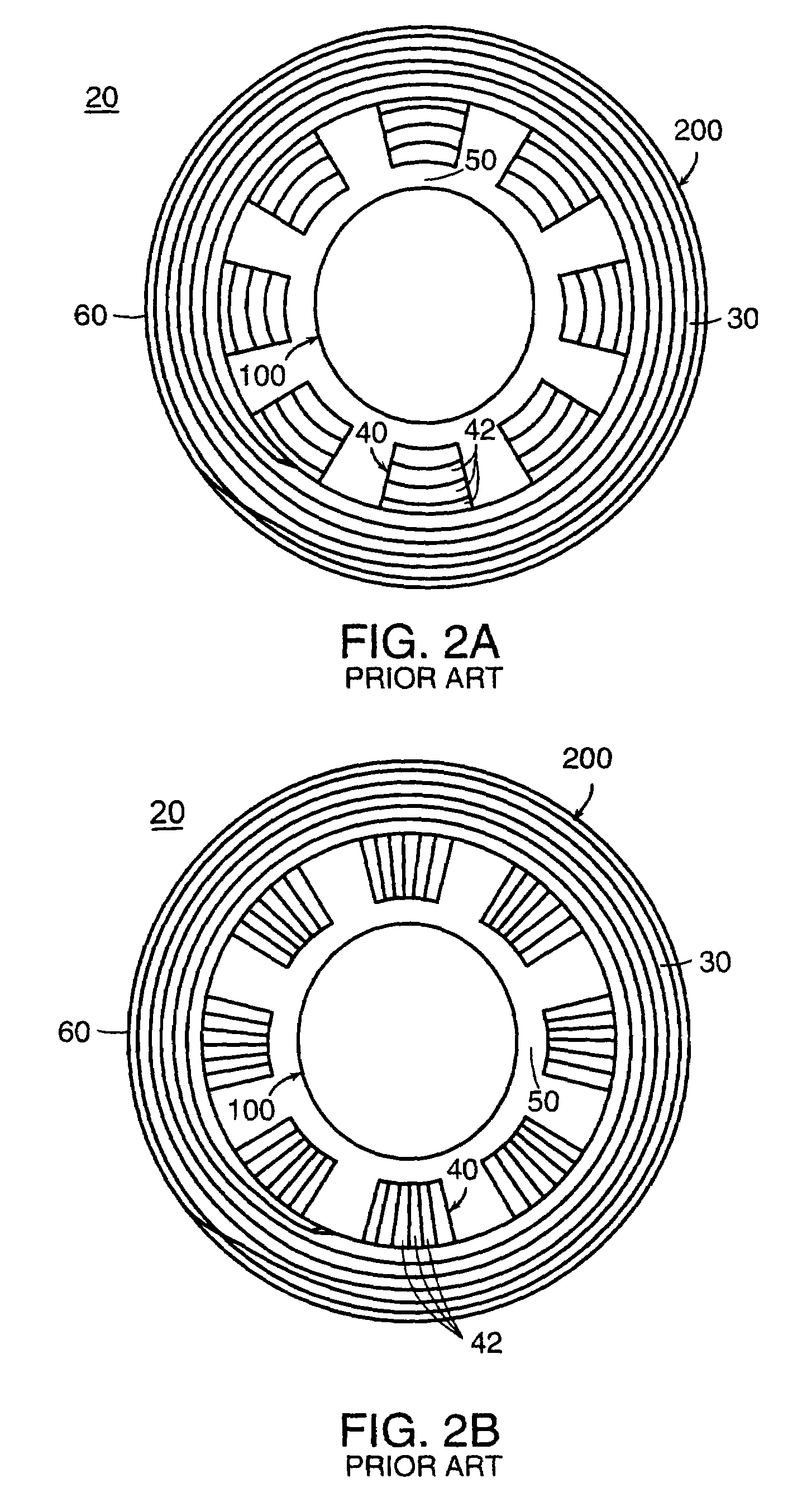Amorphous metal stator for a radial-flux electric motor
a technology of radial-flux electric motor and stator, which is applied in the direction of dynamo-electric machines, magnetic circuit rotating parts, and shape/form/construction of magnetic circuits, etc. it can solve the problems of long been considered unsuitable for electric motor use, tooling and manufacturing costs, and tooling wear and tear of fabrication tools and dies, so as to improve the efficiency of the motor and reduce power consumption and heat production , the effect of low core loss
- Summary
- Abstract
- Description
- Claims
- Application Information
AI Technical Summary
Benefits of technology
Problems solved by technology
Method used
Image
Examples
example 1
Preparation and Electro-Magnetic Testing of an Amorphous Metal Stator
[0066]Fe80B11Si9 amorphous metal ribbon, approximately 60 mm wide and 0.022 mm thick, is wrapped around a rectangular mandrel or bobbin having dimensions of approximately 25 mm by 90 mm. Approximately 800 wraps of amorphous metal ribbon are wound around the mandrel or bobbin producing a rectangular core form having inner dimensions of approximately 25 mm by 90 mm and a build thickness of approximately 20 mm. The core / bobbin assembly is annealed in a nitrogen atmosphere. The anneal consists of: 1) heating the assembly up to 365° C.; 2) holding the temperature at approximately 365° C. for approximately 2 hours; and, 3) cooling the assembly to ambient temperature. The rectangular, wound, amorphous metal core is removed from the core / bobbin assembly. The core is vacuum impregnated with an epoxy resin solution. The bobbin is replaced, and the rebuilt, impregnated core / bobbin assembly is cured at 120° C. for approximate...
example 2
High Frequency Behavior of a Low-Loss Amorphous Metal Stator
[0074]The core loss data taken in Example 1 above are analyzed using conventional non-linear regression methods. It is determined that the core loss of a low-loss amorphous metal stator comprised of Fe80B11Si9 amorphous metal ribbon could be essentially defined by a function having the form
[0075]selected to define an upper bound to the magnetic losses of the amorphous metal stator. Table 5 recites the measured losses of the stator segment in Example 1 and the losses predicted by the above formula, each measured in watts per kilogram. The predicted losses as a function of f (Hz) and Bmax (Tesla) are calculated using the coefficients c1=0.0074 and c2=0.000282 and the exponents n=1.3, m=2.4, and q=1.5. The measured loss of the amorphous metal stator segment of Example 1 is less than the corresponding loss predicted by the formula.
[0076]
TABLE 5Measured CorePredictedBmaxFrequencyLossCore LossPoint(Tesla)(Hz)(W / kg)(W / kg)10.3600.1...
example 3
Preparation and Electro-Magnetic Testing of a Nanocrystalline Alloy Stator
[0077]Fe73.5Cu1Nb3B9Si1,2,3 amorphous metal ribbon, approximately 25 mm wide and 0.018 mm thick, is wrapped around a rectangular mandrel or bobbin having dimensions of approximately 25 mm by 90 mm. Approximately 1000 wraps of amorphous metal ribbon are wound around the mandrel or bobbin producing a rectangular core form having inner dimensions of approximately 25 mm by 90 mm and a build thickness of approximately 20 mm. The core / bobbin assembly is annealed in a nitrogen atmosphere. The anneal is carried out by performing the following steps: 1) healing the assembly up to 580° C.; 2) holding the temperature at approximately 580° C. for approximately 1 hour; and, 3) cooling the assembly to ambient temperature. The assembly is vacuum impregnated with an epoxy resin solution and cured at 120° C. for approximately 4.5 hours. When fully cured, the corn is removed from the core / bobbin assembly. The resulting stacked,...
PUM
 Login to View More
Login to View More Abstract
Description
Claims
Application Information
 Login to View More
Login to View More - R&D
- Intellectual Property
- Life Sciences
- Materials
- Tech Scout
- Unparalleled Data Quality
- Higher Quality Content
- 60% Fewer Hallucinations
Browse by: Latest US Patents, China's latest patents, Technical Efficacy Thesaurus, Application Domain, Technology Topic, Popular Technical Reports.
© 2025 PatSnap. All rights reserved.Legal|Privacy policy|Modern Slavery Act Transparency Statement|Sitemap|About US| Contact US: help@patsnap.com



